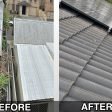In the world of mining, construction, and aggregate production, crushing equipment plays a vital role. Among the most commonly used machines are the Cone Crusher and Impact Crusher. Both crushers serve the purpose of breaking down large rocks into smaller, manageable sizes, but they operate differently and are suitable for different applications. In this article, we will explore the features, working principles, advantages, and typical uses of the Cone Crusher and Impact Crusher to help you understand which one fits your crushing needs.
What is a Cone Crusher?
A Cone Crusher is a type of compression crusher that reduces material by squeezing it between a moving piece of steel and a stationary piece of steel. The cone-shaped crushing head oscillates inside the fixed outer shell or concave, crushing the rocks by compressive force. This crusher is widely used in secondary, tertiary, and quaternary crushing stages.
The design of a Cone Crusher allows it to handle hard and abrasive materials, such as granite, basalt, and iron ore. It produces a relatively uniform particle size and is excellent for crushing medium to hard materials. The crushing chamber and the cone’s design ensure high crushing efficiency and a consistent product shape.
How Does a Cone Crusher Work?
The working principle of a Cone Crusher involves the crushing of materials between an eccentrically rotating cone and a concave hopper. As the cone rotates, the gap between the cone and concave narrows, crushing the material. When the cone moves away, the crushed product falls through the gap.
This cyclical process continues, creating an even reduction of the rock. The size of the crushed material can be adjusted by changing the gap settings, which makes the Cone Crusher versatile in producing various aggregate sizes.
Advantages of a Cone Crusher
- High Crushing Ratio: The compression method allows for a higher reduction ratio than impact crushers.
- Efficient for Hard Materials: Ideal for hard, abrasive rocks where impact crushers might wear down quickly.
- Consistent Particle Shape: Produces a more cubic and uniform output, preferred in construction and road building.
- Low Maintenance Costs: Due to the robust design and less wear on parts.
What is an Impact Crusher?
An Impact Crusher works on the principle of impact force. Material is fed into a chamber where a high-speed rotor throws the rocks against impact plates or other rocks. The impact breaks the material, which then exits the crusher through the bottom opening.
There are two main types of impact crushers: horizontal shaft impactors (HSI) and vertical shaft impactors (VSI). Both use impact forces but differ in the rotor’s orientation and crushing mechanism.
How Does an Impact Crusher Work?
In an Impact Crusher, the rock enters the crushing chamber and strikes the high-speed spinning rotor. The impact shatters the rock, and the fragments are then thrown against the breaker plates or the rock bed, which breaks them further.
This process repeats multiple times until the crushed product is fine enough to exit the crusher. The impact crusher is well-suited for soft to medium-hard materials and is often used for producing sand, gravel, and fine aggregates.
Advantages of an Impact Crusher
- High Reduction Ratio for Soft Materials: Excellent for softer materials such as limestone.
- Good for Producing Fine Material: Often used in sand and aggregate production due to its ability to produce a fine particle size.
- Versatility: Suitable for recycling materials like concrete, asphalt, and demolition debris.
- Adjustable Output: The size of the final product can be controlled by varying the rotor speed and the gap between the rotor and impact plates.
Cone Crusher vs Impact Crusher: Key Differences
Both the Cone Crusher and Impact Crusher are essential in crushing operations, but their differences determine their application:
| Feature | Cone Crusher | Impact Crusher |
|---|---|---|
| Crushing Principle | Compression | Impact |
| Suitable Materials | Hard, abrasive rocks | Soft to medium-hard materials |
| Product Shape | Cubic, uniform | Less uniform, more fines |
| Wear and Tear | Lower wear on parts | Higher wear, especially on rotor and impact plates |
| Common Usage | Secondary, tertiary crushing | Primary or secondary crushing in softer rock |
| Maintenance | Lower maintenance costs | Higher maintenance due to wear parts |
Applications of Cone Crusher and Impact Crusher
Cone Crushers are used extensively in mining, quarrying, and aggregate production where high crushing ratios and consistency are needed. They are perfect for crushing granite, basalt, and iron ores and are often found in the second or third stage of crushing.
Impact Crushers are favored in recycling plants and construction projects that require breaking down softer materials or producing fine materials like sand. Their ability to handle demolition waste makes them valuable in sustainable construction efforts.
Choosing Between a Cone Crusher and Impact Crusher
Selecting the right crusher depends on several factors such as the type of material, desired product size, production capacity, and operational costs.
- If you need to crush hard, abrasive materials with a need for uniform particle shape, a Cone Crusher is the better choice.
- If your materials are softer, or you want to produce fine aggregates and sand, an Impact Crusher offers superior performance.
- Consider maintenance and operating costs. Cone Crushers usually have lower wear costs, while Impact Crushers require more frequent replacement of wear parts.
- Environmental considerations may also play a role. Impact crushers tend to produce more dust and fines, which might be a factor in sensitive areas.
Conclusion
Both the Cone Crusher and Impact Crusher have distinct advantages and serve specific roles in the crushing industry. Understanding their working principles, advantages, and limitations helps operators choose the best equipment for their needs. Whether it’s the robustness and efficiency of the Cone Crusher or the versatility and fine crushing capabilities of the Impact Crusher, these machines continue to drive productivity and innovation in mining and construction sectors.
When selecting crushing equipment, always assess your material properties, required product size, and operational conditions carefully to ensure optimal performance and cost-effectiveness. With the right choice, you can enhance production efficiency and achieve consistent quality in your crushing operations.






